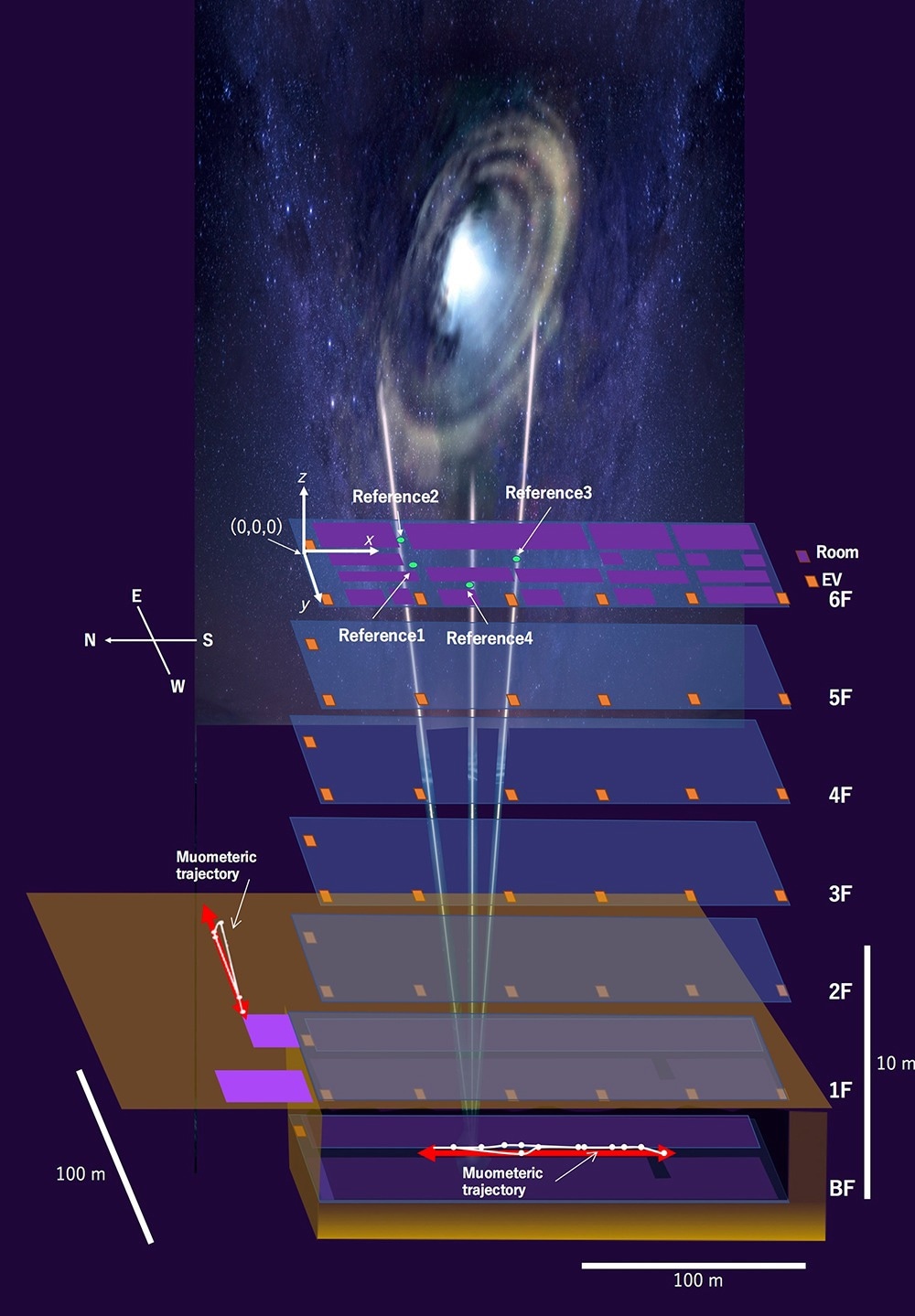In an allegedly world-first experiment, muons—superfast, subatomic-sized particles—have been utilized to travel underground wirelessly. The University of Tokyo researchers used muon-detecting ground stations synchronized with an underground muon-detecting receiver to determine the receiver’s location in the basement of a six-story structure.

Navigating inside with muons. The red line in this image represents the path the “navigatee” walked, while the white line with dots shows the path recorded by MuWNS. Image Credit: Hiroyuki K.M. Tanaka
This new technology could be used in future search and rescue operations, to monitor undersea volcanoes, and to direct autonomous vehicles underground and underwater since GPS cannot pass through rock or water.
The global positioning system, or GPS, is a trusted navigational aid with a long list of advantageous uses, including safer air travel and real-time location mapping. It does have some restrictions, though.
At higher latitudes, GPS signals are weaker and more susceptible to jamming and spoofing, which is when a fake signal takes the place of an actual one. Additionally, signals can be bounced off of objects like walls and trees, and they cannot go through objects like buildings, rocks, or water.
In contrast, muons have recently gained attention for their capacity to allow us to peer through pyramids, see inside cyclones, and explore the depths of volcanoes. Muons fall continuously and regularly (10,000 per square meter per minute on average) and cannot be manipulated.
Cosmic-ray muons fall equally across the Earth and always travel at the same speed regardless of what matter they traverse, penetrating even kilometers of rock. Now, by using muons, we have developed a new kind of GPS, which we have called the muometric positioning system (muPS), which works underground, indoors, and underwater.
Hiroyuki Tanaka, Professor, Earthquake Research Institute, The University of Tokyo
MuPS was initially developed to aid in the detection of changes to the seafloor caused by tectonic or underwater volcanoes. For a muon-detecting receiver underground, it needs four muon-detecting reference stations above ground to generate coordinates.
Early versions of this technology required a wire connection between the receiver and a ground station, substantially limiting movement.
However, the most recent study synchronizes the ground stations with the receiver using high-precision quartz clocks. The receiver’s coordinates can be calculated using the four parameters supplied by the reference stations along with the synchronized clocks required to gauge the muons’ “time-of-flight”. The muometric wireless navigation system (MuWNS) is the name of this new technology.
Reference detectors were put on a building's sixth story, and a “navigate” took a receiver detector to the basement floor to evaluate MuWNS’s navigational capabilities. They held the receiver and moved carefully through the basement’s corridors.
Instead of using real-time navigation, measurements were obtained to determine their course and validate the path they had followed.
Tanaka added, “The current accuracy of MuWNS is between 2 meters and 25 meters, with a range of up to 100 meters, depending on the depth and speed of the person walking. This is as good as, if not better than, single-point GPS positioning aboveground in urban areas. But it is still far from a practical level. People need one-meter accuracy, and the key to this is the time synchronization.”
It will take time and money to develop this system so that real-time, meter-accurate navigation is possible. The team’s ideal choice would be chip-scale atomic clocks (CSAC).
“CSACs are already commercially available and are two orders of magnitude better than the quartz clocks we currently use. However, they are too expensive for us to use now. But I foresee that they will become much cheaper as the global demand for CSAC for cellphones increases,” Tanaka further stated.
MuWNS could one day be utilized to steer driverless vehicles underground or to direct underwater robots. The team is hopeful that ultimately it will be possible to incorporate MuWNS into hand-held devices, like cellphones, as all the other electronic components of MuWNS, excluding the atomic clock, can now be miniaturized.
This could be a game changer in the future for search and rescue teams in emergency situations like a building or mine collapse.
Journal Reference
Tanaka, H. K. M., et al. (2023) First navigation with wireless muometric navigation system (MuWNS) in indoor and underground environments. iScience. doi:10.1016/j.isci.2023.107000.